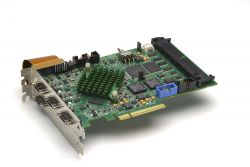Robotic Accuracy to be Combined with Human Flexibility for Working Together
Rather than taking jobs, robots will one day soon join people on the factory floor, as co-workers and collaborators. Thats the vision of a EUR 6.5 million project led by Stockholm's KTH Royal Institute of Technology.
With their production demands and short-notice orders, small-to-medium enterprises in Europe can scarcely afford to implement robots in their assembly lines - so they rely heavily on manual operations. But even those large operations that rely on robotics find that the machines are not flexible enough to adapt to different production jobs or unforeseen situations. Robots in manufacturing today require expensive time offline to be reconfigured for different tasks or to carry out customisations.
Symbiotic Human Robot Collaborative Assembly, a five-year EU Horizon 2020 initiative that KTH is leading, aims to provide an alternative: Robots that can quickly adapt their work plans to changing production situations, and even respond to commands that production workers provide by touch, voice or gesture.
Making robots that can collaborate with humans on the production line will reduce lead times for business large and small, says Lihui Wang, professor of Production Engineering and Chair of Sustainable Manufacturing at KTH.
"In Europe, we have to compete by innovation - by new ways of doing things that reduce costs," Wang says. "The idea behind this project is to put people and robots together - it guarantees employment, improves efficiency and makes the production system more robust and flexible," he says.
Combining these capacities with new standards for safe operation of robots, people and robots will be able to literally work side by side, in what Wang calls a "fenceless environment" where they can sense the presence of their human co-workers and avoid accidents. KTH will be involved in identifying new safety standards with the International Organization for Standardization (ISO).
"We will combine the accuracy of robots with the flexibility of human beings, so they can work together more efficiently and productively," he says. "Currently, robots do one thing and humans another. They are physically separated and it takes a long time to predetermine the operation."
One thing robots will be able to do with humans is the heavy lifting. For example, Wang says, a robot could hold an engine block in whatever position the worker requests, thereby relieving the worker of undue physical effort.
Wang says that by taking on the physical challenges of factory work, collaborative robots will create opportunities for people with a greater variety of physical abilities. "Physical condition, gender or age will no longer be important," he says.
Another part of the project is to make the human-robotic system capable of providing instructions in given situations to human co-workers. Wang says the system could even be designed to customise instructions based on the competence and training of the person they are collaborating with.
The project includes 15 partners in seven countries, including: the Institute for Computer Science and Control at the Hungarian Academy of Sciences; University of Patras, Greece; University of Skövde, Sweden; and the VTT Technical Research Centre of Finland.
Demonstration robots of varying levels of complexity will be set up in three factories in Europe: Robomotions food packaging shop in Stuttgart, Germany; Aciturri Engineering S.L.U. aeronautic components factory in Spain; and Volvo Cars engine assembly plant in Skövde, Sweden.
"Instead of the traditional project, where you sit in a university laboratory, this will involve testing the technology in real production environments," Wang says.
Wang says the project offers KTH an opportunity to highlight the excellence of its research and its impact on society. "We can also demonstrate the quality of implementation and the reliability of our technology."
In the long term, Wang sees the project as another way to make production work attract to young Europeans. "There currently is a bad image of production work," he says. "Its dirty and dangerous and demeaning, they say. So we keep losing workforce.
"But collaborative robots will not only reduce long-term injuries and work-related issues, theyll make the worker a smart agent. And it makes the factory a more attractive environment."
http://www.kth.se
Featured Product

